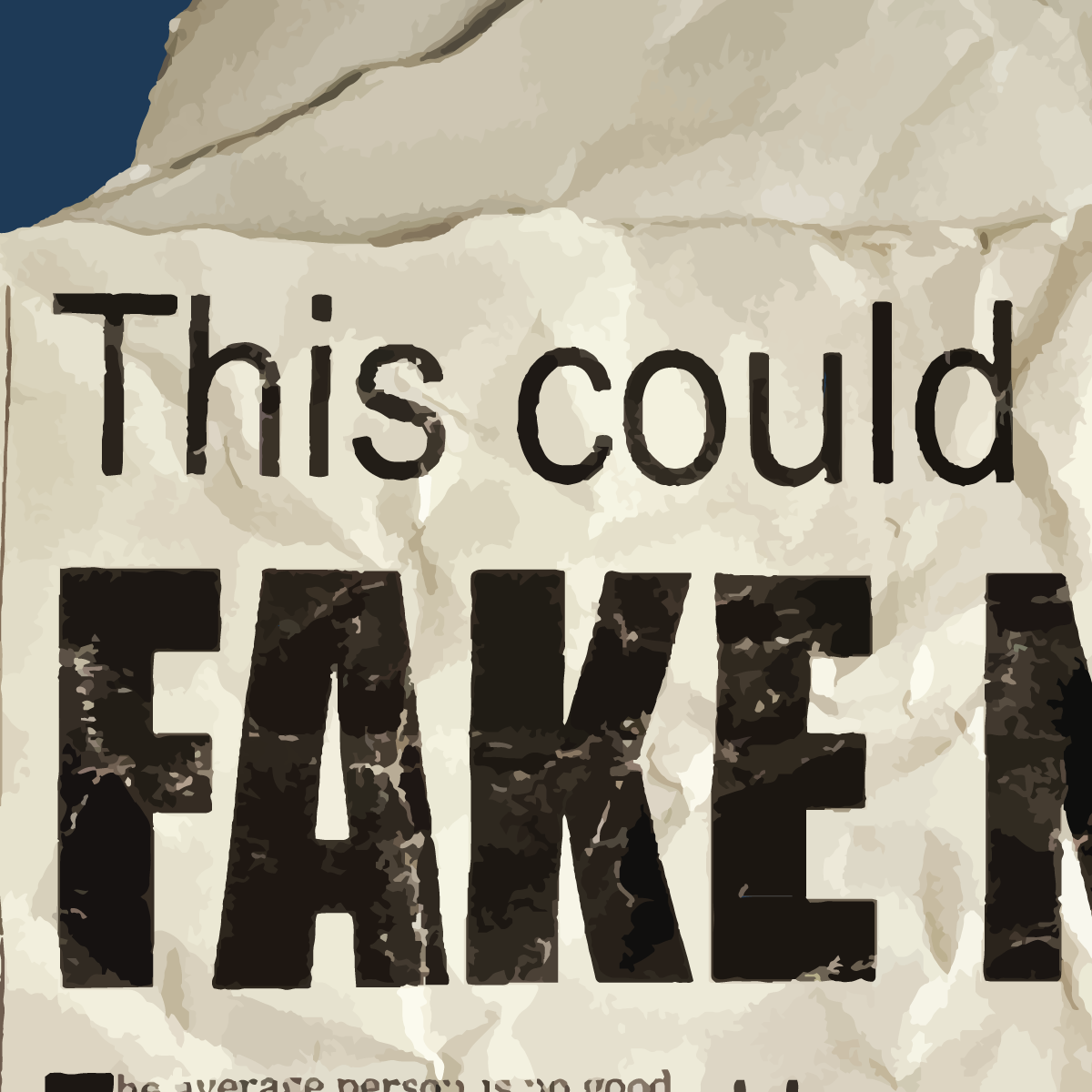We can’t build democratic classrooms—or a just society—if we don’t teach young people how to recognize manipulation, reflect critically, and anchor themselves in truth.
Misinformation is nothing new. But today, it’s supercharged—moving at speeds and scales we’ve never seen. The Reuters Institute’s 2023 global study found that over half of people surveyed couldn’t confidently tell whether the news they encountered was trustworthy. At MIT, researchers discovered that false information spreads six times faster than truth, especially when it’s emotionally provocative (Vosoughi, Roy, & Aral, 2018).
And this isn’t just a theory—it’s reality.
Misinformation in the Media
In 2023, Fox News agreed to pay $787 million to settle a defamation lawsuit filed by Dominion Voting Systems, a direct consequence of the network disseminating falsehoods related to the 2020 U.S. presidential election (Robertson, 2023). This settlement marked not only a substantial financial repercussion but also a public acknowledgment of the tangible harm caused by misinformation (Folkenflik, 2023). The litigation surrounding Fox News is ongoing; another lawsuit filed by Smartmatic, seeking $2.7 billion in damages, remains unresolved (Robertson, 2023).
Throughout the legal proceedings, Fox News explicitly positioned its election coverage as protected “opinion” under the First Amendment rather than factual reporting (Peters, 2023). Despite this argument, internal documents and judicial findings from the Delaware Superior Court indicate otherwise. The court explicitly determined that Fox News had “broadcast false statements about Dominion” and had portrayed itself publicly as a reliable news source rather than merely an entertainment channel, thus undermining its “opinion-only” defense (Dominion v. Fox News, 2023).
Media experts have long contended that Fox News operates as “an entertainment network masquerading as a news outlet,” a critique reinforced by revelations disclosed during these lawsuits, underscoring the broader implications for public trust in media (Folkenflik, 2023).
Misinformation Harms People
As a Queer son, father, educator, and school improvement coach, I’ve experienced firsthand how misinformation can erase people’s identities, distort truths, and do deep harm. Coming out during the AIDS crisis, I vividly remember individuals refusing to shake my hand, their fear driven by rampant misinformation about HIV transmission (Herek & Glunt, 1988). The LGBTQIA community has repeatedly faced harmful stereotypes, conspiracy theories, and outright falsehoods perpetuated by biased media, political figures, and misinformation campaigns, resulting in stigma, marginalization, and violence (GLAAD, 2022). Countless examples—from false narratives around HIV/AIDS to contemporary distortions around transgender youth—highlight misinformation’s destructive power (Human Rights Campaign, 2023).
Yet, I have also witnessed how truth—when taught with care, courage, and clarity—can liberate and affirm identities, fostering environments of acceptance, understanding, and dignity. If we want to raise citizens who can think critically, question confidently, and act compassionately, we must teach students to become metacognitive learners.
That’s why my co-author Isaac Wells and I are proud to be releasing our forthcoming book, Metacognitive Clarity: Think Rigorously. Advance Democracy., with Mimi & Todd Press this fall. In it, we explore how metacognitive clarity is more than a cognitive strategy—it’s a moral and democratic imperative. Our goal is to help educators create learning environments where students aren’t just absorbing information, but actively interrogating it, owning their thinking, and shaping a more just world.
What Is Metacognitive Clarity?
Metacognitive clarity is the ability to think about your thinking. It’s the skill of monitoring your thoughts, evaluating your beliefs, and adjusting your understanding. In practice, it helps students ask themselves questions like:
- “Is this information credible—and why do I think that?”
- “Am I reacting emotionally, or am I analyzing this logically?”
- “Where can I find other perspectives or verify this claim?”
This clarity helps learners build a defense against manipulation—and a compass for navigating the complexities of the world.
Finland’s Playbook: Teaching Truth as a Civic Duty
Finland has become a global model for how to teach truth. Since 2014, the Finnish education system has integrated media literacy into every grade and every subject, emphasizing metacognitive clarity as foundational to its success. Students learn to:
- Recognize bias, employing metacognitive strategies to question their initial assumptions and identify underlying motives in media content.
- Analyze sources, actively reflecting on their thought processes to discern credibility and reliability.
- Reflect on emotional responses to media, explicitly examining how personal biases and emotions shape their interpretations.
These are not standalone lessons—they’re deeply embedded within Finland’s broader metacognitive approach, fostering continuous reflection on how students think about information. This comprehensive, reflective practice has paid off: Finland regularly ranks as one of the countries most resilient to disinformation in Europe (European Policies Initiative, 2022). The reason? A national commitment to nurturing students’ capacity to critically examine their own cognitive processes, empowering them to thoughtfully question and evaluate what they see, hear, and feel.
ISTE: Embedding Media Literacy Into National Standards
The International Society for Technology in Education (ISTE) anchors media literacy in its well-respected national standards, adopted across all U.S. states (Colorado Department of Education). Central to these standards is metacognitive clarity, guiding students to be mindful, intentional learners who:
- Plan and use effective research strategies, leveraging metacognitive practices to monitor and adapt their approaches as they seek information.
- Evaluate the accuracy, credibility, relevance, and perspective of information, explicitly reflecting on their cognitive processes to judge information rigorously (ISTE).
Moreover, ISTE’s Digital Citizen standard (1.2) guides students to “evaluate the accuracy, perspective, and validity of digital media”. integrating metacognitive reflection as students assess their own understanding and decision-making processes (ISTE). These competencies are foundational, not peripheral—woven through ISTE’s Student, Educator, and Coach frameworks (ISTE), and reinforced through practical tools like their “SEARCH” model, which explicitly promotes metacognitive habits of reflection and adjustment during research tasks (ISTE). By rooting media literacy in a robust metacognitive framework, ISTE ensures learners actively engage in reflective practices, empowering them to navigate an increasingly complex digital landscape effectively.

5 Metacognitive Practices to Combat Misinformation
Here are five student-centered practices that build metacognitive clarity and media literacy:
1. Fact, Opinion, or Misinformation? Sorting Circles
Grade Level: 3–6 Students read statements and sort them into categories—fact, opinion, or misinformation—then discuss their reasoning in small groups.
Metacognitive Move: Encourages students to slow down, question assumptions, and reflect:
- “What evidence do I have?”
- “Could someone else reasonably interpret this differently?”
2. Media Detective Diaries
Grade Level: Middle School students select a media post or article they’ve encountered during the week and analyze:
- Who created it and for what purpose?
- What emotions did it trigger?
- What made it seem believable—or not?
Metacognitive Move: Helps students monitor how media affects their beliefs:
- “Why did I trust this?”
- “What made me skeptical?”
3. Check the Source! Credibility Game
Grade Level: Upper Elementary to High School
Students are given headlines and article snippets, then work in teams to assess their credibility.
Metacognitive Move: Students plan investigative steps and reflect on source evaluation:
- “What makes a source credible?”
- “How did I go about verifying this?”
4. Algorithm Awareness Simulation
Grade Level: High School
Students create fictional social media profiles, then simulate what types of content each one would receive.
Metacognitive Move: Reveals the mechanics of algorithmic bias and filter bubbles:
- “Why didn’t this post show up for me?”
- “What can I do to diversify my media exposure?”
5. Cross-Text Comparison
Grade Level: All Grades
Students compare two articles that cover the same event and examine differences in tone, language, imagery, and bias.
Metacognitive Move: Encourages reflection on perception and authorial intent:
- “Which source feels more trustworthy—and why?”
- “How is my reaction shaped by word choice or images?”
Each of these practices invites students to ask how they think, not just what they think—mirroring the cognitive habits ISTE enshrines in its Knowledge Constructor and Digital Citizen standards.
Why Metacognitive Clarity Matters
This is bigger than literacy. This is about democracy. It’s about identity. It’s about preparing students to navigate a world where manipulation is just a click away. When we teach students how to think about their thinking, they learn to pause before sharing. They learn to challenge their own biases. They learn to locate themselves in a broader civic and ethical context.
They don’t just consume knowledge—they construct it.They don’t just inherit the world—they shape it. In partnership with national frameworks like ISTE’s—and with global models like Finland—this is how we teach for liberation, resilience, and democratic flourishing.
Join the Impact Team movement—ignite metacognitive clarity and empower your school to fight misinformation head-on. Together, let’s build classrooms where critical thinking thrives, voices are valued, and truth leads the way.
Learn how your school can join the movement!
References
- Bloomberg, P., & Wells, I. (in press). Metacognitive clarity: Think rigorously. Advance democracy. Mimi & Todd Press (2025).
- European Policies Initiative. (2022). “Index of resilience to disinformation” Open Society Foundations.
- Vosoughi, S., Roy, D., & Aral, S. (2018). “The spread of true and false news online.” Science, 359(6380), 1146–1151.
- PrintMag. (2024). “Finland’s ABCs of media literacy.”
- Reuters Institute. (2023). “Digital news report 2023.”
- Rantala, J., & de Souza, M. L. (2018). Critical thinking, efficacy, and transfer skills to defend against ‘fake news’ in Finland.
- The Guardian. (2023). Fox News to pay $787.5m to settle Dominion’s defamation lawsuit.
- International Society for Technology in Education (ISTE). (n.d.). ISTE standards & student digital citizenship.
- Dominion v. Fox News Network, LLC, No. N21C-03-257 EMD (Del. Super. Ct., 2023). Retrieved from https://courts.delaware.gov/Opinions/Download.aspx?id=345820
- Folkenflik, D. (2023, April 18). Fox News settles blockbuster defamation lawsuit with Dominion Voting Systems. NPR. Retrieved from https://www.npr.org
- Peters, J. W. (2023, March 6). Fox News faces major test as defamation suit looms. The New York Times. Retrieved from https://www.nytimes.com/2023/03/06/business/media/fox-news-dominion-lawsuit.html
- Robertson, K. (2023, April 18). Fox News settles defamation suit for $787.5 million, Dominion says. The New York Times. Retrieved from https://www.nytimes.com
- GLAAD. (2022). “Accelerating acceptance: The impact of misinformation on LGBTQ communities.” Retrieved from https://www.glaad.org/publications/accelerating-acceptance-2022



